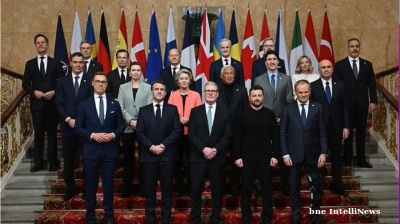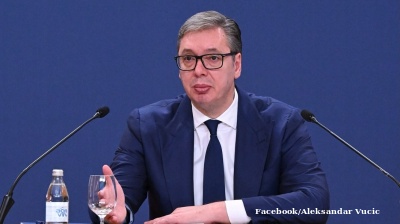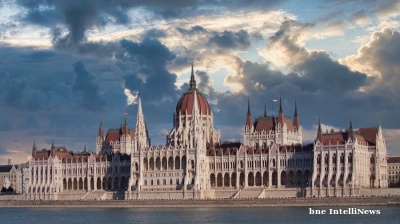A few days ago five Ukrainian infantry brigades supported by a small number of (obsolescent) tanks attacked the thinly-held Russian line running north-west from Izyum towards Kharkiv. The exact number of attacking troops is unknown, since a brigade can contain anything from 3,000 to 5,000 men, but a lightly-armed infantry brigade is generally at the larger end of that range, so the Ukrainian attack probably totalled 20,000 men.
The line that they attacked was barely a line at all – probably no more than 5,000 men dispersed along 80km of open country, a density of 60 men per kilometre.
The target was well chosen. Russian and allied forces fell back in haste, leaving supplies of equipment and ammunition behind them, but suffering minimal casualties as their retreat was covered by heavy artillery fire and almost constant air attacks on the advancing Ukrainian force.
By the end of the attack Ukrainian troops occupied a triangle with a base of some 100km and a depth of 50km, with the town of Kupyansk at its apex and Izuym at its southern corner. Russian and allied forces brought the advance to a halt on the Oskil river, a scant 40km from the border of Russia itself.
Much ground has been won, but its cost is not something that Kyiv is publicising. Russian Ministry of Defence reports claim that the advance killed some 2,500 Ukrainian troops. If that is true normal military arithmetic would see another 5-7,000 hospitalised. With total casualties in the region of 30-40% of the men engaged, the attacking formations will now be militarily ineffective, requiring replacement by fresh units from behind to hold and control the ground taken.
In normal conflict mortality and injury rates this high would be seen as tantamount to a defeat, but not here. While the territory captured has little strategic importance (which is why it was so lightly held), the 2,000 square kilometres taken will massively energise and encourage Ukraine’s will to resist, and the will to pay for Ukraine’s resistance within the Western alliance. At the same time, the defeat has substantially damaged Moscow’s credibility, and will disproportionately undercut support for the war in Russia, and possibly even in the Donbas oblasts.
Moscow’s concern for its credibility will extend to its prospects in the forthcoming Kherson and Zaporizhiya referenda, currently scheduled for early November. In both oblasts a vote for either Russian-ism or for autonomy under Russian protection is somewhat predicated on faith in Russian protection. While the Ukrainian Kherson offensive was blunted with ease, the Kharkiv defeat can only deeply undercut likely support for Russia in these two crucial votes. Do not be surprised if they are further delayed.
Ukrainian credibility has received a substantial boost
At the same time, the Kharkiv defeat will energise and encourage support for Ukraine among its wavering friends in the West. The UK’s new prime minister has long been an anti-Russia hawk, and the Kharkiv advance will reinforce her hawkish tendencies. Some European states have been visibly wavering over continued support for Ukraine. Here too, the advance may be expected to brace the hawks and silence the doves. In the US we may expect the State Department’s hawks to win more arguments over money and weapons with the Defence Department’s more pragmatic doves.
In short, if war is politics carried on by other means then the Kharkiv advance represents a massive political win for Kyiv out of all proportion to the scale of the military victory (which is by itself small, expensive and unimportant).
So where does that leave Moscow? We still have no clear information on its true objectives either for the war as a whole or for this (continuing) Phase 2. Russian and allied forces have continued their slow occupation of the Donbas salient between Donetsk city and Slovyansk, where the rate of advance has been around, or even less than, the 500 metres per day I reported two months ago.
One reason for that snail-like progression is that Kyiv has successfully continued to generate new forces to replace the possible thousand Ukrainians killed and hospitalised each day by the slow grind of the Russian/LDNR advance. In doing so they have prevented a breakthrough by the Russian armoured forces waiting behind the Donbas front. The prospects for a breakthrough look no better or worse now than before, except that Moscow has lost a substantial quantity of credibility.
We now have credible evidence that the people of Ukraine will collectively accept mortality rates of 10% per engagement in front-line units (a rate not seen since 1916), and are ready to join new replacement units, even ones barely trained and lightly equipped, and join the fight with high prospects of death or serious injury. Estimates suggest that Kyiv can mobilise some half a million such men (and perhaps twice that number). If true (they look true to me) then we may expect those men to be assiduously digging prepared fortifications into the Ukrainian countryside west of the Donbas salient to stop a future breakthrough.
Meanwhile Kyiv can bring local forces – presently 20,000 men, in future probably larger forces – to concentrate on any point of the Russia/LDNR 1,000km front it chooses. Moscow has too few men in Ukraine to be strong everywhere, for as long as Ukrainian forces are willing to conduct attacks with very high casualty rates.
Moscow’s choices are narrowing
Moscow’s choices are narrowing. One option is to double up on the war, move 50 or 100 “regular” Russian battalion tactical groups to Ukraine to bolster the effort, and to push for that Donbas breakthrough and the occupation of the whole of Trans-Dnepr Ukraine followed by an imposed peace. The option of reinforcing the whole 1,000km front to a level at which Ukrainian attacks can be repelled is not available to Russia absent a full mobilisation of Russian forces – something that Mr Putin is clearly not going to do.
It is by no means certain that Mr Putin has the political capital even to increase Russian forces by 50,000. The inevitable trail of body bags that will come home from the reinforced front will undermine critical support. But with the Kharkiv triangle debacle hanging over his head, a doubling up of Russian regular forces may appear to be a way to show strength and resolution at an acceptable cost, while achieving that breakthrough. The ultimate aim of a breakthrough might be to anchor the Russian/LDNR line on the Dnieper river, easily held and defended no matter what numbers of men Kyiv assembles, but that result also requires the capture of several cities much larger than Mariupol, and that is probably now beyond the capabilities of Russian allied forces.
A second option would be to define Phase 2 as just the occupation of Donetsk and Luhansk Oblasts (Donetsk is only half-occupied at present), with an uneasy peace to follow based on a standstill agreement which leaves Kharkiv, Mikolaev, Odesa and the Dnieper cities as Ukrainian. However, Kyiv and Ukrainians generally, energised by the Kharkiv advance, might now reject that deal out of hand.
Economic collapse may change the ground rules
Circumstances may overwhelm the power of choice for both sides. Kyiv is currently filling its large budget deficit by creating money hand over fist, making hyperinflation a more than likely outcome. Meanwhile this week, Russia has begun attacking civilian power generation and distribution sites for the first time, leaving whole cities and the railway system without power. Shutting down the railway system (which runs on electric power) cuts Ukraine’s ability to assemble attacking forces, while shutting down power and water put pressure on Kyiv to move towards a deal.
Kyiv may find its ability to resist evaporating even while its forces win impressive victories. Something similar happened to Germany in the spring of 1918, when it's “MICHAEL” offensive overwhelmed British forces in northern France, captured 3,000 square kilometres of territory in two weeks and looked like driving the allies into the Channel, but which preceded an economic collapse of Germany as a fighting power a few months later.
In the past I have noted that when offered the choice between “less violence” and “more violence” Moscow tends to choose the latter. With Ukraine on the verge of financial collapse, and Europe enthusiastically carrying out acts of extreme self-harm by refusing both to pay for Russian gas in rubles and to open Nord Stream 2, Putin seems more likely to bring more troops to the theatre to try his chances on the battlefield rather than on the negotiating table. If Ukraine collapses meanwhile that choice will not be expensive, and if it doesn’t then that choice may deliver a resolution.
Meanwhile, in its battle for credibility, if Moscow can turn the Kharkiv triangle into an artillery killing ground for Ukrainians there is a hope that it can present the withdrawal as a trap instead of a defeat (that trope is already being promoted by some analysts) and win back Russia’s damaged warfighting credibility.
It seems more likely to me that Moscow will, once more, opt for “more violence” at this juncture. “More violence” may prevent another flashy Ukrainian victory but it is unlikely to speed up the slow advance into the Donbas salient, so we look set for a continuation of the war at its current pace.
Opinion

COMMENT: Europe’s “fake it till you make it” war approach cannot hold off Russia’s trillion dollar war machine
In their speeches on the war in Ukraine, European leaders appear like a video clip looped on repeat. Standing before the cameras they declare new packages of support for Kyiv and threaten new measures to pressure Russia as if it was still 2022.

A year after the Novi Sad disaster, Belgrade faces one crisis after another
Serbia’s government is grappling with a convergence of crises which threaten to erode President Aleksandar Vucic’s once-dominant position.

Don’t be fooled, Northern Cyprus’ new president is no opponent of Erdogan, says academic
Turkey’s powers-that-be said to have anticipated that Tufan Erhurman will pose no major threat.

COMMENT: Hungary’s investment slump shows signs of bottoming, but EU tensions still cast a long shadow
Hungary’s economy has fallen behind its Central European peers in recent years, and the root of this underperformance lies in a sharp and protracted collapse in investment. But a possible change of government next year could change things.


.jpg)
